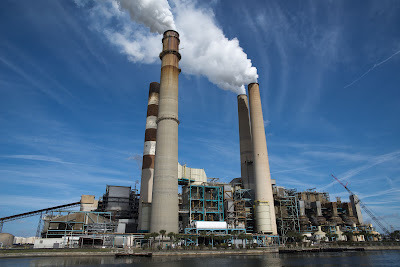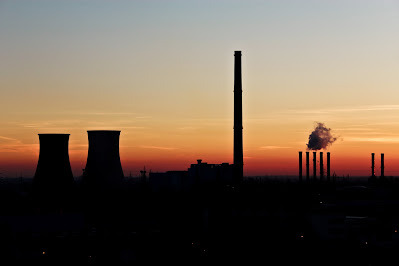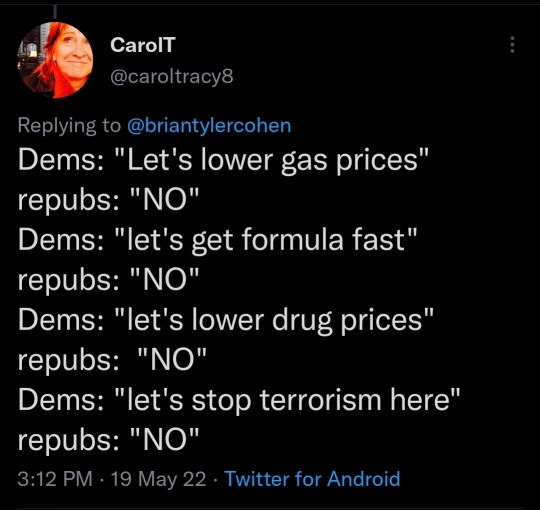#Gas Price
Text

Crayola Joe did that.
Crayola Joe did that!
#Crayola Joe#Joe Biden#Biden#President Biden#Biden did that#Bidenflation#gas prices#gas price#Russia Ukraine war#Afghanistan debacle#food shortages#supply chain#broder crisis#union betrayal#Biden destroying America#FJB#FJBiden#LGB#Let's go Brandon
52 notes
·
View notes
Text
NewsFlash from good (?) old Germany.
Now it's official:
The Society for German Language has chosen the word of the year 2022.
It's "Zeitenwende" (which means "turn of an era", "change of times" or "turning point").
The reason for this choice seems quie obvious.
It's the war against Ukraine that calls into question the entire post-world-war order and raises many questions about security, economic and energy policies.
By the way: "Krieg für Frieden" ("War for peace") and "Gaspreisbremse" ("Gas price brake") are in second and third place.
Anyone familiar with history will remember:
Zeitenwende actually refers to the new era that began with the birth of Christ.
A new era of hope for universal peace and social justice.
Seems we still have a long way to go…
#thought of the day#thought of today#in the light of certain events#word of the year#zeitenwende#turn of an era#change of times#turning point#ukraine war#peace#security#economy#energy#ecology#social justice#war for peace#gas#gaspreise#gaspreisbremse#gas price#christianity#birth of christ#peace on earth#happy advent#christmas#christmas is coming#happy holidays#think about it
4 notes
·
View notes
Text
کیا گیس کی قیمتوں کے حوالے سے سخت اقدامات کا وقت آگیا ہے؟

پاکستان کیسے بحرانوں کی دلدل میں دھنسا جارہا ہے اس کی ایک اچھی مثال قدرتی گیس ہے۔ قیام پاکستان کے ساتھ ہی یہاں وافر گیس بھی دریافت ہوئی جبکہ ملک کے ابتدائی سرکاری اداروں میں 1950ء میں بننے والی پاکستان پیٹرولیم بھی شامل تھی۔ ایک ایسا ملک جس کے پاس اپنے قیام کے وقت توانائی کے بہت کم ذرائع تھے اور عملی طور پر توانائی کی پیداواری صلاحیت تک موجود نہ تھی، ایسے میں پاکستان نے مقامی گیس کی وافر مقدار کو اپنے لیے بڑی پیمانے پر ایک صنعت کی بنیاد بنایا درحقیقت بہت کم لوگ جانتے ہیں کہ پاکستان کی سب سے پرانی کھاد بنانے والی کمپنی اینگرو نے 1960ء کی دہائی کے اوائل میں اس وقت کام کرنا شروع کیا جب اس کی پیرنٹ کمپنی ایسو، تیل دریافت کرنے کی کوشش کررہی تھی اور اس نے حادثاتی طور پر مری فیلڈز میں گیس دریافت کر لی۔ اس وقت مری فیلڈز ریگستان میں دور کہیں موجود تھی۔ چونکہ ایسو تیل کی کمپنی تھی اس لیے گیس کی دریافت ان کے کسی کام کی نہیں تھی، لہٰذا انہوں نے گیس کے ان ذخائر کو کچھ سالوں تک ایسے ہی چھوڑ دیا۔ چند سال بعد کسی کو خیال آیا کہ اس گیس کا استعمال کر کے کھاد بنائی جاسکتی ہے بس اس کے لیے حکومت سے مناسب قیمت کے لیے بات چیت کرنی ہو گی کیونکہ کھاد کی قیمتیں مکمل طور پر حکومتی کنٹرول میں ہوتی ہیں۔
یہ 1960ء کی دہائی کے وسط کی بات ہے جب ایسو فرٹیلائزر کا قیام عمل میں آیا جو کہ شاید اس وقت پاکستان کی دوسری کھاد بنانے والی کمپنی تھی۔ اس کے بعد سے اور بھی دریافتیں ہوئیں، دیگر کھاد کی کمپنیاں بھی وجود میں آئیں جن میں بالخصوص ’فوجی فرٹیلائزر‘ نمایاں ہے جو 1970ء کی دہائی کے اختتام پر قائم ہوئی۔ پہلے تھرمل پاور پلانٹس بھی 1970ء کی دہائی میں قائم ہوئے جس کے ساتھ ہی بڑے پیمانے پر پانی سے بجلی کی پیداوار کی صلاحیت بھی منگلا اور تربیلا ڈیم کی صورت میں سامنے آئی۔ یہ دونوں ڈیم 1960ء کی دہائی کے وسط سے 1970ء دہائی کے اواخر تک فعال ہوئے۔ اس سلسلے میں گڈو تھرمل پاور اسٹیشن سب سے بڑا اور پرانا پلانٹ تھا جس نے 1974ء میں کام کرنا شروع کیا، یہ مکمل طور پر قدرتی گیس پر چلتا تھا۔ یہ کندھ کوٹ میں واقع تھا جو کہ زیادہ آبادی والے تین شہروں کراچی، لاہور اور کوئٹہ سے قریب واقع تھا تاکہ یہ ان تینوں شہروں کو توانائی فراہم کر سکے۔ یہ پلانٹ اب بھی فعال ہے لیکن اس کے کمیشن ہونے ک�� بعد اس کے کچھ ٹربائنز کو تبدیل کر دیا گیا ہے۔

1990ء کی دہائی تک پاکستان میں دنیا کے بڑے پائپ گیس ڈسٹری بیوشن انفراسٹرکچر میں سے ایک موجود تھا، اس وقت تک کھاد کی تیاری اور توانائی کی پیداوار کے علاوہ پاکستان کے گھریلو صارفین کو بھی بڑی مقدار میں قدرتی گیس فراہم کی جاتی تھی۔ اس دوران دیگر صنعتی دعوے دار بھی پیدا ہوئے جیسے سیمنٹ اور ٹیکسٹائل کے شعبے جہاں خاص طور پر پروسیسنگ میں بوائلرز کو چلانے کے لیے گیس کو بطور ایندھن استعمال کیا گیا۔ یوں اس ملک میں گیس نے بنیادی ایندھن کی حیثیت اختیار کر لی۔ یہ بات بظاہر حیران کُن لگے لیکن ملک میں قدرتی گیس کی وافر مقدار نے دراصل ہمیں تیل کی قیمتوں کے ان مختلف بحرانوں سے محفوظ رکھا جن کا ان دہائیوں میں عالمی معیشت کو سامنا کرنا پڑا تھا۔ اس کا مطلب یہ نہیں کہ پاکستان 1970ء اور 2000ء کے اواخر میں آنے والے تیل کے بحران کی لپیٹ میں نہیں آیا۔ یہاں یہ ذکر صرف اس بات کی نشاندہی کے لیے کیا گیا ہے کہ اگر ملک میں قدرتی گیس کی فراہمی نہ ہوتی تو ملک ان سے کہیں زیادہ متاثر ہوتا کیونکہ قدرتی گیس نے ان بحرانوں کے اثرات کو کافی حد تک کم کیا۔
1980ء کی دہائی کے اوائل سے ہی یہ آگہی لوگوں میں پھیلنا شروع ہو گئی تھی کہ ملک میں گیس کی قیمتیں تبدیل ہونے والی ہیں اگرچہ ملک میں کوئی بھی اس پر عمل درآمد کے لیے تیار نہیں تھا۔ آئی ایم ایف قیمتوں کے تعین میں اصلاحات پر زور دے رہا تھا لیکن جنرل ضیاالحق کی حکومت تعمیل پر راضی نہیں تھی۔ اس حوالے سے دلائل پیش کیے گئے کہ اس سے خوارک کے تحفظ پر اثرات مرتب ہوں گے جو کہ آج ہم دیکھ بھی رہے ہیں۔ 1980ء کی دہائی کے وسط میں یہ آگہی زور پکڑ گئی اور ایک ایسے کمیشن کا قیام عمل میں آیا جس کا مقصد پورے پاکستان میں قیمتوں کو کنٹرول کرنا تھا۔ اس کمیشن کی سربراہی آفتاب غلام نبی قاضی نے کی جو کہ اس وقت سینیئر سرکاری افسر اور غلام اسحٰق خان کے قریبی دوستوں میں شمار کیے جاتے تھے۔ ان کی تعیناتی نے ظاہر کیا کہ حکومتِ وقت گیس کی قیمتوں کے حوالے سے اقدامات لینے کے لیے سنجیدہ ہے۔ کمیشن نے سب سے پہلے کھاد کی قیمتوں پر کام کیا جس کے بعد تیل، اور زرعی مصنوعات جیسے گندم اور کپاس پر بھی توجہ مرکوز کی۔
متعدد وجوہات کی بنا پر کمیشن کھاد کی قیمتوں کو ریگولیٹ نہیں کر پایا۔ مینو فیکچرز نے کہا کہ کھاد کی قیمت اس مطابق ہونی چاہیے جس پر نیا پلانٹ فعال ہو سکے۔ کمیشن نے دیکھا کہ کھاد کا براہِ راست تعلق گیس سے ہے اور غذائی اشیا کی قیمتوں پر بھی کھاد کی قیمت اثرانداز ہوتی ہے، تو گویا کھاد اہم ہے کیونکہ اس کے دیگر اشیا کی قیمتوں پر اثرات مرتب ہوتے ہیں۔ یہی وجہ ہے کہ آج تک کھاد کی قیمتوں کو مکمل طور پر کنٹرول میں رکھا جاتا ہے۔ پھر ساتویں پانچ سالہ منصوبے میں یہ بات سر اٹھانے لگی کہ پاکستان کے گیس کے ذخائر ختم ہونے والے ہیں اور کوئی نئی دریافت بھی نہیں ہو رہی ہے اور نہ ہی ہونے کا امکان ہے۔ 1990ء کی دہائی کے اوائل میں پیش گوئیاں سامنے آئیں کہ پاکستان کے گیس فیلڈز 2008ء یا 2010ء کے قریب ممکنہ طور پر کمی کے دور میں داخل ہو جائیں گے۔ بنیادی طور پر گیس پر انحصار نہ کرنے والی صنعتوں کی تعداد دیکھتے ہوئے اور زراعت و خواراک کی پیداوار پر اس کے اثرات کی وجہ سے یہ تباہی کی پیش گوئی کے مترادف تھا۔
منصوبے میں خبردار کیا کہ اس تباہی سے بچنے کے لیے اقدامات لینا شروع کرنا ہوں گے۔ گیس کی دریافت کی کوششیں تیز کریں، کھپت کو کم کریں اور سب سے بڑھ کر قیمتوں میں اصلاحات لے کر آئیں۔ لیکن ان میں سے کوئی اقدامات نہیں لیے گئے۔ قیمتوں کا یہی نظام برقرار رہا۔ ایسی کوئی قابلِ ذکر دریافت نہیں ہوئی جوکہ ذخائر کم ہونے کی پیش گوئی کو غلط ثابت کر سکتی۔ کھپت کم کرنے کے بجائے 2000ء کی دہائی کے اوائل میں جنرل پرویز مشرف نے ایک نیا سیکٹر متعارف کروایا جہاں گھریلو گیس کو گاڑیوں کے ایندھن کے طور پر استعمال کیا جانے لگا۔ اس کے فوراً بعد خاص طور پر ٹیکسٹائل کی صنعت میں کیپٹیو پاور بھی سامنے آئی۔ متوقع طور پر 2010ء سے قدرتی گیس کے ذخائر میں کمی آنا شروع ہوئی۔ 5 سال بعد 2015ء میں تاریخ میں پہلی بار پاکستان نے گیس کی درآمدات کا آغاز کیا۔ آج صورتحال یہ ہے کہ ملک میں گیس کی کل طلب کا تقریباً حصہ درآمد کیا جاتا ہے جس کا مطلب یہ ہے کہ اس کی قیمتیں مکمل طور پر بین الاقوامی مارکیٹ کے مطابق ہوتی ہیں۔ تو اب ہم اس دور میں داخل ہو چکے ہیں جہاں ہمیں گیس کی قیمتوں کے حوالے سے سخت اقدامات لینے کی ضرورت ہے۔ گزشتہ سال ہم نے گیس کی قیمتوں میں ایک بڑا اضافہ دیکھا۔ رواں سال بھی کچھ ایسا ہی ہوا۔ شاید اگلے سال اس سے زیادہ اضافہ ہو۔ جب آپ ایک مقام پر ٹھہرے رہتے ہیں اور اصلاحات لے کر نہیں آتے تو ہمیں ایسی ہی کسی صورتحال کا سامنا کرنا پڑتا ہے۔
خرم حسین
یہ مضمون 21 دسمبر 2023ء کو ٖڈان اخبار میں شائع ہوا۔
بشکریہ ڈان نیوز
0 notes
Text
0 notes
Text
Economic Consequences of the Ukraine War
Economic Consequences of the Ukraine War
My last post mentioned the USSR collapse. One of the longer term consequences has been this Ukraine war. Currently, there have been problems of shelling of the Zaporizhzhia nuclear plant, and this appears to have happened in that our TV news has shown some of the smashed concrete, etc. The net result is the plant has shut down. Each side accuses the other of doing the shelling, but it seems to me…
View On WordPress
#abandoned mines#chemical industry#gas price#hazardous waste#hazards and environment#Soviet environmental protection
0 notes
Text
Cavity Wall Insulation: What It Is and What It Does.
Did You Know: Cavity walls can account for up to 35% of heat loss in the typical 3 bed semi-detached house. This results in your boiler working overtime to compensate for the loss – putting more stress on the boiler, throwing more CO2 into the atmosphere and costing you more in your energy bills.
Cavity walls are a type of construction method that came into existence mainly in the 1920s, replacing solid wall construction. To describe the difference between them, simply, cavity walls are two layers of bricks that are 1 brick thick. Solid wall construction is 1 layer of bricks, 2 bricks thick. Here’s a couple of images for reference:
Why Did Construction Switch To Cavity Walls?
Primarily the main issue with solid walls was the damp associated with them. As the years past and winters and summers expanded and contracted the mortar between bricks, tiny cracks formed.
These cracks let water pass through when it rained, and since directly attached to the outside wall was the inside of homes, damp patches and mould became and issue.
The Cavity Wall method was brought in to limit this – those tiny cracks still occur, though less-so because we have better materials to create the mortar. Water still can get inside the wall, but the cavity wall construction also added vent blocks which you’ll typically see at the bottom of the wall – this lets moisture escape, so it doesn’t ruin the wall or get inside your home.
Essentially, the moisture doesn’t even reach the second layer of bricks because it just drips down the first layer and then leaves the wall through the ventilating blocks at the bottom.
Do Solid Walls Need Insulating Too?
Absolutely they do, in fact they’re worse for heat exchanging than cavity walls as there’s the layer of air between the two brick layers that can very minimally help to regulate the temperature. This regulating effect is miniscule however – the heat loss will still be around the same, it just takes a couple minutes longer to escape through a cavity wall. This is why both walls types need insulating – heat exchange still occurs in both construction methods. We also insulate Solid Walls and it could be free with an ECO4 grant!
Will Cavity Wall Insulation Make My Home Warmer?
Yes and No. Insulation helps stop heat travelling from one place to the other, and stops cold travelling from one place to the other. So essentially in winter when you’ve got your heating on, it’ll keep the heat in. In summer, when it’s melting outside and your homes brickwork could fry an egg, it’ll help keep the inside of your home cooler.
How Is Cavity Wall Insulation Installed?
The insulating material is blown into the cavity by drilling small holes in the brickwork at various points around the house to ensure a full fill. The material is then blown/injected into the wall to fill up the space, trapping air and reducing heat loss via conduction and convection.
At Titan Property Services we use Bonded Bead – very spall balls that are essentially glued together to set them in place after the fill. This “glue” is also waterproof, which both protects the insulation and also reduces the chances that the damp from outside will reach the inner brickwork – limiting the chances of damp forming in your home via the cavity.
How Do I Know If I Have A Cavity Wall?
There’s a few ways to check if your home has a cavity wall construction.
The easiest way is to just pop outside and have a look at your brickwork – do you see any half sized bricks? If you do that means your wall is probably a solid wall. If you don’t and you only see bricks laid on their side, then it’s more than likely a cavity wall. You can use the images above for reference!
You could also use the date your house was constructed to tell you – if it was before the 1920’s then it’s likely solid wall. If it was after 1980 it’s likely cavity wall, if it’s between the two dates it’s probably a cavity wall however some homes were still being built using solid wall construction – refer to the brickwork on this one.
You could also measure the wall with a tape measure. Open a door or window and measure from the outside of the wall to the inside – if it’s above 30cm, it’s probably cavity. If it’s below 30cm, it’s likely solid.
Lastly you could also check the EPC for your home. EPC stands for Energy Performance Certificate – it’ll tell you what wall type you have and give a good indication as to whether the wall is insulated already. Just pop your post code in the link below then click your address:
How Can I Tell If My Cavity Is Filled?
You could check the link above to see your homes EPC which will be an indication, however they’re not perfect.
Pop outside and check the brickwork again. During the installation process holes are drilled to allow the material inside – you should be able to spot several holes around the brickwork, especially below windows, if your homes had it’s cavity filled.
You can also request a borescope check – a surveyor will come out and drill a small hole in the brickwork, then use a borescope tool which is essentially a camera on a stick, to visually inspect the cavity. They’ll be able to tell you if the cavity is filled or not.
Is It Possible For Cavity Wall Insulation To Become Damp?
Because cavity wall insulation repels water, it should not get moist. Some houses, however, will not be appropriate for cavity wall insulation if they are prone to rain caused by the wind and have damp issues. Before this kind of insulation can be placed, the damp issues in the property must be resolved.
How Much Does It Cost To Insulate Cavity Walls?
The cost of insulating cavity walls varies substantially depending on the size of your property, the materials used, and the amount of time it takes. For the average 3 Bed Semi Detached we charge around £400 as a paid service, however qualifying home owners could receive cavity wall insulation for free with ECO4.
Read more about Cavity Wall Insulation and the ECO4 grant here.
Given that energy prices are increasing by a further 70+% in October, this will pay for itself in under a year when you’re saving up to 35% on your energy bills! Insulation is also guaranteed for 25 years and usually good for 40+ years, so you’re making profits repeatedly each year by saving on those bills!
You can apply for ECO4 and claim many free home energy saving measures here.
Do I Need Planning Permission to Insulate Cavity Walls?
Cavity wall insulation typically won’t need planning permission. In some circumstances it may – but only if the insulation would modify the look of your home’s exterior, or if you reside in a listed building or a conservation area, will you need to contact the planning department.
Is It Possible To Get a Grant To Insulate Your Cavity Walls?
Cavity Wall & other types of insulation for your home are available under the ECO4 government grant. If you are a homeowner in receipt of government benefits you may be eligible for free or heavily subsidised cavity wall insulation for your home. You can read more about ECO4 and apply here.
Is It Possible To Remove Cavity Wall Insulation?
Yes. It is feasible to remove the insulation from the cavity walls. If the insulation is formed of mineral fibre, a strong vacuum may be used to remove it. Other forms of insulation must first be dismantled. This is accomplished by removing some brickwork, using special technology to break down the insulation, and then sucking it out until it is entirely clean.
0 notes
Text

feeling a little less alone thanks to lil bits of graffiti like this
2K notes
·
View notes
Text

Gassing up the Nova in the 70s
341 notes
·
View notes
Text


Republicans in Congress refuse to help on any situation that helps all Americans.
Never forget their inhumanity and disloyalty.
13K notes
·
View notes


